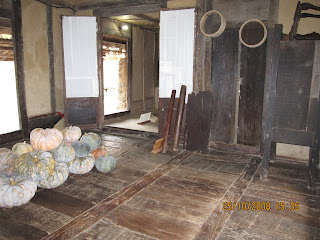It has been a long time since I last posted on this blog.
Beginning my life as a sophomore changed a lot of things.
It made me busier...
Today, I saw a TV programme called "PR Korea"
Various celebrities of Korea flew abroad in order to
promote Korea to other nations and to correctify
some of the mistaken information about South Korea.
For example, in England students learn Korea as one of the poorest, less economically
developed nations, while in reality, it is certainly not.
South Korea established its most civilized and developed culture and economy.
Also, more surprisingly, in Argentina, the nation's most widely used geographical
textbook is stating that Korea is part of China!
Outrageous!
Korea is a nation, not a part of Korea.
Plus, we learn Korean as our mother-language, not Chinese.
To foreigners, Asian countries and their culture may seem familiar, but that is not genuine.
Japan, China, and Korea each nation has his own distinct culture and lifestyles.
It is believed most commonly throughout the world that Koreans are "Dog Eaters".
Only very little proportion of Koreans eat dogs, but the mass media from abroad are
generalizing this fact as a inherent characteristic and food culture of Korea.
This kind of wrong information is one of the factor that stains Korea's reputation.
Writing materials about information that is not even closest to the truth is worse than
not mentioning about Korea.
But this kind of pointing fingers to aloofness to Korea of foreign countries cannot be tolerated.
The blame liest to Korean government, for not doing its best to promote Korea.
There are calls from companies, factories, and book publishers and even governments from
abroad, information about korea.
However, government is not working hard enough, or according to the content of the programme
not working at all to correctify the mistaken facts.
This kind of government's laziness and aloofness is slowly spoiling the nation's value and image.
Even in this very moment, without knowing about the government's dawdling, our nation's true
identity, true value is slipping away from our hands.
This has to be stopped.
So, Korean celebrities went abroad to change such false information and to convey Korea's
messages for telling the truth and to give out materials such as books and DVDs about Korea.
I, myself, as one of the proud members of VANK, an organization where ordinary students like
me volunteer to work as cyber diplomats, have been working hard to promote Korea
to my penpals and even further ask for some of the renowned book publishers to correctify the
wrong information of Korea on their websites.
But everytime I carried out my job, I found it very stressful and oppressed that things are
not changing enough.
That even if the strength of so many VANK members gather to speak out the truth concerning
Korea, the power was not powerful enough.
But, with the help of famous celebs of Korea, visiting the publishers to amend the truth,
the sign of change is sparkling so brightly.
I am not saying that their one time volunteer job is exceeding people's individual effort to
advertise Korea.
I am simply approving of the impact of celebs' work.
With extra help from Korean celebrities, things would advance and change much faster.
Watching the show for nearly 2 hours, I realized that grass root action has to meet with
help from other people, that if every Koreans stand out and cooperate,
things can change at a fast speed and eventually our history will change.
 National Museum of Korea meets its 100th Anniversary!
National Museum of Korea meets its 100th Anniversary!






 “honjauopsoye” is the word of JeJu island for saying hello.
“honjauopsoye” is the word of JeJu island for saying hello. A wooden sculpture of Dolharoobang.
A wooden sculpture of Dolharoobang. This sculpture is similar to Dolharoobang. It is called "Jungsung". Mostly, two Jungsungs, a woman and a man is placed at the entrance of villages in order to scare off ghosts and bad spirits and keep the villagers safe from diseases and calamities. Its face, unlike that of Dolharoobang looks very stern and scary.
This sculpture is similar to Dolharoobang. It is called "Jungsung". Mostly, two Jungsungs, a woman and a man is placed at the entrance of villages in order to scare off ghosts and bad spirits and keep the villagers safe from diseases and calamities. Its face, unlike that of Dolharoobang looks very stern and scary.

 Inside the house there's 2~3 room and in one room a man is making a basket out of straw.
Inside the house there's 2~3 room and in one room a man is making a basket out of straw.  This is pottery used in the kitchen.
This is pottery used in the kitchen.

 Jeju citizens raised pigs in their backyards so those pics can eat away people's feces. And, fortunately those pigs are such great workers!
Jeju citizens raised pigs in their backyards so those pics can eat away people's feces. And, fortunately those pigs are such great workers!















